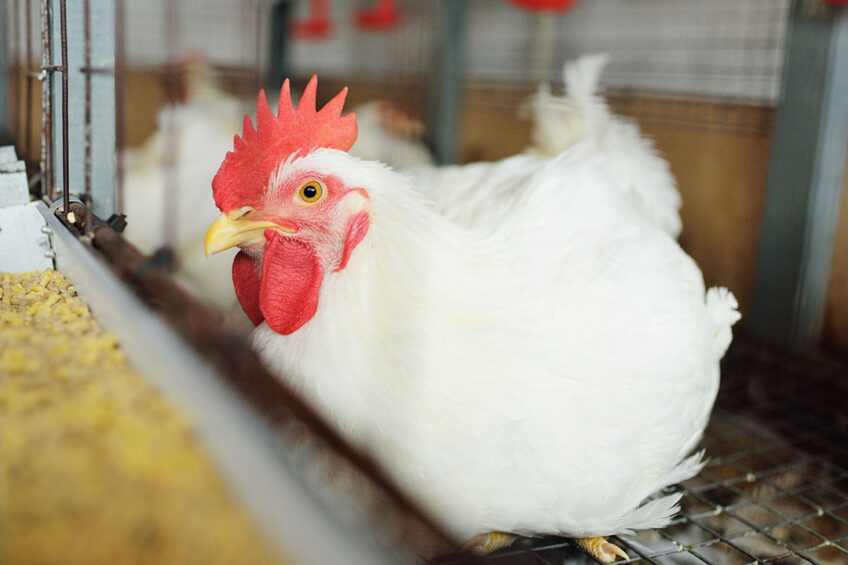Maintaining broiler performance while reducing feed cost

Investigating the alternative choices at hand to reduce feed costs is unavoidable to get through the difficulties of the ingredient price surges and volatility continuing in the market.
The pandemic has put us through multiple challenges and uncertainty in our lives. Starting from restriction in our everyday lives, unprecedented feed price surges, the lack of labour, and logistic challenges have caused the animal industry to struggle. However, after going through all these difficulties, hope is now arising with vaccination and continuous cooperation in preventing the spread of COVID-19. People are starting to think of their post-pandemic lives as returning to normal and having more time with loved ones. Yet, we cannot ignore that red alert remaining in the livestock and poultry industry. In addition to the continued feed grain price surge, hikes in the prices of micro-nutrients and freight rates are causing risks for producers.
Challenge
One noticeable challenge is the difficulties of choice in feed formulation. The increased cost of feed ingredients is inescapably forcing us to make changes in formulas by adopting alternative ingredients instead of the high-priced conventional corn and soybean which have accounted for most of the poultry feed. Nutritionists have added options such as DDGS, palm kernel meal, rapeseed meal, or copra meal, but the problem is that an undesirable fragment, NSP (non-starch polysaccharides), has jumped in at the same time.
NSP is a structural carbohydrate found in corn, soybean, and other feed grains and it is well known to disrupt feed digestion in monogastric animals by itself and block digestible enzymes from the nutrients within. Increased intestinal viscosity by NSP can interrupt the gut barrier and health. Further problems led by excretion of undigested feed should be recognized for its environmental degradation as well as economic loss. NSP degrading enzymes, which have been well accepted in the market to break down NSPs, improve digestion of feed nutrients and decrease the impact on the environment. A solution which targets major NSP components such as xylans, beta-glucans, galactomannans, and alpha-galactosides can be an optimal choice for feed formula with alternative feed ingredients as well as conventional corn and soybean. Thermo-, pH stability and in vivo efficacy are other factors to consider, accounting that the feed production process undergoes a severe temperature and the poultry gastrointestinal tract has a stress environment with varied pH levels, both of which can influence the effectiveness of NSP enzymes before they arrive in the lower digestive tract.
Multi-NSP enzyme
Endo-Power is a multi-NSP enzyme product based on Pathway Intermediates’ research-dedicated capability and tightly controlled quality management system, supported by the ISO/IEC 17025 accredited research institute and poultry research farm along with various prestigious research institutes and universities from around the world. Scientific results and customer experience covering decades are proving their effectiveness in saving feed costs and increasing poultry digestibility. More recently, Pathway expanded its product range by adding an OMRI-listed product for organic production. A broiler study carried out with 250 Ross 3008 male birds investigated the effectiveness of Endo-Power (Table 1). In the study birds were fed either a conventional diet (PC), a diet with lower energy (NC), or a diet of NC plus Endo-Power for 42 days. The NC diet was 50 kcal ME/kg lower than the PC diet, and the multi-NSP enzyme inclusion level was 0.01%.
For the 42 days of the experiment, the NC group birds fed a reduced-energy diet slowed their average daily gain and resulted in a 211g decrease in final body weight compared to the PC group. Endo-Power supplementation at 0.01% to the NC diet improved FCR and ADG, and the final body weight increased 207g compared to the NC group (Figure 1). Similar growth performance between the PC and NC plus Endo-Power group birds showed the positive effect of the multi-NSP enzyme on degrading various NSPs and accelerating nutrient digestion in poultry. The results indicate a further opportunity of feed cost savings amid the high feed-crop price era.
Figure 1- Effect of Endo-Power supplementation on growth performance in broilers.

Saving costs
Investigating the alternative choices at hand to reduce feed costs is unavoidable to get through the difficulties of the ingredient price surges and volatility continuing in the market. NSPs are another challenge in adopting various alternative feed ingredients. Endo-Power is a scientifically proven solution to tackle the unexpected NSP challenges and achieve cost savings during the uncertain times in which grain prices are soaring.
Author: Dr. Danny Cho, Ph.D., Director, Pathway Intermediates


